Interview with Sanjay
Godbole
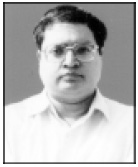 SANJAY GODBOLE
is a an
institution in himself. He is an archeologist,
historian, indologist, an author, publisher and
owns a personal museum. Sometime back Sh.
Kuldeep Raina had a long discussion with him at
his Pune residence on different aspects of
Kashmir History and Culture. In this part we are publishing the excerpts of
discussions pertaining to
Kashmir
Archeaology. SANJAY GODBOLE
is a an
institution in himself. He is an archeologist,
historian, indologist, an author, publisher and
owns a personal museum. Sometime back Sh.
Kuldeep Raina had a long discussion with him at
his Pune residence on different aspects of
Kashmir History and Culture. In this part we are publishing the excerpts of
discussions pertaining to
Kashmir
Archeaology.
--The
Editor
KR: When were first
Archaeological explorations
carried out in Kashmir?
SG: In the year 1929 A.D., during the British regime, the first
ever Archaeological excavation was carried out
at Burzahom , a village 10 kms to the
north-east of
Srinagar. This exercise was repeated in 1959. at
the same place. During the second excavation,
the ancient remains which surfaced were
subjected to carbon-14 test .These remains were
found to be as old as 2375 B.C., belonging to
‘Neolithic’ period.
The residents of
Kashmir during that period constructed
underground Dwelling Shelters. The structure was
erected with wooden rafters and a roof was
provided over this frame of rafters. Steps and
/or ladders were used to climb up and down. The
fire hearth was placed near the entrance; the
position of the hearth was permanently there
only. At Burzahom black and gray and ash
coloured pottery, Harpoons, Small hand axes,
arrow heads, needles made of bones etc. have
been discovered. In the subsequent phase the
residents made houses of mud and raw bricks. The
people at that time buried their dead in a
folded posture, with earthen pots buried by the
side of the dead bodies. They buried dogs,
wolves, deer (antelopes) also, besides humans.
This habitation came to an end in the year 1400
B.C.
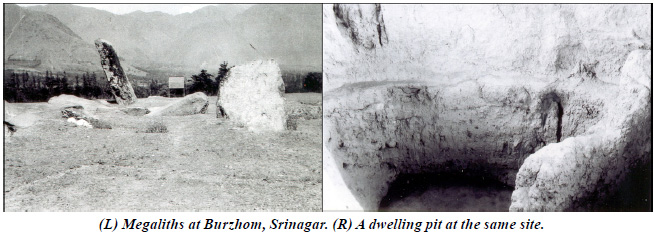
In the ‘Iron age’ the remains of the housing
structures were found during excavations at the
same place (Burzahom). The remains found at
Burzahom are considered to be precious and
important from archaeological point of view.
KR: How do you perceive the augmentative
additions to archaeological studies in
Kashmir
during recent times?
SG: There is a natural stream known as Shaliganga in the
district of Budgam in
Central Kashmir. On the left Bank of this stream, there is a place
called Gurwait-Yarikhan. During an
archaeological excavation in 1999 A.D. in a
jungle, near Gurwait-Yarikhan the archaeologists
came across a settlement which was spread to
several terraces. This settlement also consisted
of pavements of baked terracotta tiles. The size
of the tiles was 36 cms x 40 cms each, and some
numerals in Kharoshti script were found
on them. These tiles had a symbolic mark of
Swastika on their surface. In addition gray
coloured pottery also surfaced at the site.
During this landmark discovery, some potsherd
pipes, deployed for conveying the potable water
to human settlements were also reported.
The first ever Buddhist settlement was brought to
light, in the year 1934, during an
Archaeological excavational exercise, near
Srinagar in Kashmir, at ‘Harwan’. Here, the
Terracotta tiles, similar to those found at
Taxila surfaced. Hence ‘Harwan’ was logically
considered as a manufacturing hub for these
tiles in Kashmir. Now, since at Hutmura,
Pahalgam, Budgam, the Archaeological
explorations have discovered similar tiles, it
is now considered opinion of the experts that
Kashmir was the principal manufacturing hub for
these tiles, with a high degree of
craftsmanship.
Kutbal is a town in the district of Anantnag in
Kashmir. From the findings of the archaeological
excavations, it has been established that Kutbal
was one of the most beautiful and well planned
cities during the rule of Kushan kings.
Stamped tiles from the remains of the old
structures have surfaced at Kutbal. At Ballyar,
remains of a Buddhist monastery have been found.
Experts, therefore, have opined that during the
2nd century, the third world Buddhist conference
was most probably convened in Kashmir.
Some Terracotta heads were discovered at a place
called Lethpur, previously known as Lalitapur.
Near the P.O.K. there is a village known as
Zirhama in the vicinity of the famous village
, Shardi. Here four unique Bronzes,
belonging to the 9th century, A.D. have been
found. Out of these four Bronzes, one is that of
Lord Vishnu ascending on Garuda-the King of
Eagles. This Bronze, undoubtedly is very
precious from Art History point of view.
KR: What type of ancient coins have been found
in Kashmir? Rather, how the science of
Numismatics has fared so far in Kashmir?
SG: The Kushan kings struck several coins in
Kashmir. These coins have on one side image of
the king and on the other a deity . Such
numerous coins often surface in good numbers in
various parts of
Kashmir. Two ancient kings of
Kashmir namely Hiranyakul and Mihirkul
had struck coins which showed the king in a
standing pose with a spear in one of hand and
by his other hand, offering something to the
Yagnya kund on the reverse side of the coin.A
deity is shown at times with some inscription.
The copper coins, belonging to the rulers of the
Karkota dynasty had a mixture of copper
and gold i.e. copper 88% and gold 12%. The
Silver coins of ‘Tormana’ have also been found.
In the ninth century A.D.
Kashmir was ruled by Kings belonging to ‘Utpala’ dynasty. The coins
struck by them are made of copper. These coins
have a deity and legends on the obverse side
and the figure of the king on the reverse side .
These coins have been found in hoards. The king
‘Harshadeva’ issued and brought into effect, in
Kashmir, coins in gold and silver. These coins
had an image of an elephant on the obverse side
and an inscription in Devnagari script. Such
coins continue to surface even today in Kashmir.
In the district of Baramulla, at Dengiwacha (Rafiabad)
some coins belonging to Kushan kings have been
brought to light. So also, at a place called
Watnar, about 1800 copper coins were found
stacked in an earthenware pot. These coins
belong to the eleventh century and were struck
by the rulers of Lohara dynasty. This is how
numerous coins from different rulers surface in
Kashmir. The coins of medieval period, which surfaced at
Srinagar, some years back, have a distinct
reference to ‘Kashmir Mint’. Srinagar Mint was
known as Kashmir then. The coins, brought in
effect by the Mughal rulers were of different
types. On one of the coins struck by Shah Alam
the Second this
Kashmir mint has been addressed as ‘Jammun’, i.e.
Jammu. This coin belonged to the year 1195
Hijari.
Emperor Jehangir and Shahjahan also struck their coins
from over here which also included ‘Nisar’.
Many Persian verses are found on the coins struck
here by Jehangir.
On one such coin, there is a Persian verse as
follows:-
Jahan-e-Firuz gasht be Kashmir Sikkah-e-zar
Zi Nur Nam-e-Jahangir Shah, Shah Akbar
‘Money coined in
Kashmir was made world conquering by the light
of the name of Jahangir Shah-Son of Shah Akbar’.
Aurangzeb and subsequent Mughal emperors too struck
coins at this place.
After Mughals, the Durrani rulers introduced and
brought in effect, their coins in
Kashmir.
KR: Why is the famous chronicle Rajatarangini by
Pt.Kalhan held in high esteem by the Indologists
and other oriental scholars ?
SG: The best example of regional histories in
India that can be cited is that produced by
Kalhan, known as Rajatarangini .This great
chronicle dealing with the history of
Kashmir was written during the year 1149 to 1150 A.D. by Kalhan.
This history happens to be the one and the
only one in the ancient literature. A Kashmiri
Brahmin called ‘Pandit Kalhan’ went into minute
details of the records and archives of the kings
of
Kashmir, made an in-depth study of the
documents such as certificates, various
declarations , charities and other contemporary
books. Some experts, do not agree with certain
facts and notings, particularly those to the
period earlier to seventh century. The
chronicles beyond the seventh century are,
however, considered as authentic and credible.
Had the historical account of other states been
compiled in a similar manner, we would certainly
be in a position to assemble a fairly accurate
picture of Ancient India.
I have a copy of Sanskrit Rajatarangini which
was published by the East India Company in the
year 1835. A copy of the above was presented by
me to the Kashmiri Sabha of Pune.
Rajatarangini has since been translated in
to several Indian languages. A special
attention needs to made about the translation
of Rajatarangini into Persian by Dr.
Sabir Afaqui ,of Muzzafarabad.It has been very
well received by the erudite scholars of Iran.
The
Sahitya Academy has published an english version
of Rajatarangini.
This chronicle by Pandit Kalhan, is very
useful for students, scholars and experts of
Indological studies.
KR: After Swat Valley What remains
belonging to ancient Greek Culture have been
found in Kashmir?
SG: At a distance of 60 kms from Srinagar,
there is a place called Semthan and a
hillock known as Chakdhar, originally
Chakradhar. The original name of Semthan
was Sinhastan. There was a big- sized
gate called Haathi Dwar on the Chakdhar
hillock. King Jaun has made a reference to the
temple of Lord Vishnu which existed there.
During the regime of king Lalitaditya, Persian
wheels were installed for supplying water to
this area. On this hillock, there is a tomb of
Totak Shah. In the vicinity of this area,
terracotta pieces, ceramics and pieces of
Earthenware pots were found. After the
appearance of an article in Srinagar Times,
by Shri Arjun Dev ‘Majboor’, the Archaeology
department undertook an excavation work there
in 1977 A.D. During this excavation, innumerable
remains came to light.
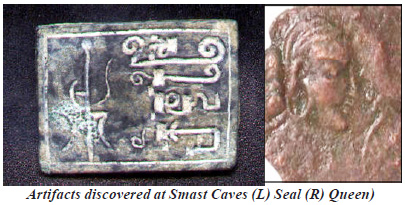
In the 1982 issue of Man and Environment
it is claimed that the missing gap between the
Neolithic culture and the Indo-Greek culture has
been aptly filled in by the discoveries of this
excavation. The experts have surmised that the
coins of Greek Origin and the Greek styled
sculpture found here, indicate that Greek empire
had definitely extended up to this part of the
country. The ceramic industry was in full bloom
and there was a huge forest of cedar & fir
trees, perhaps beyond the reach of our
imagination. The Staple food in Kashmir was
wheat and rice in those times. A seal
indicating Greek connection has been traced.
After the discovery of gray coloured N.B.P.
pottery, saffron coloured and red coloured thin
polished wares of Greek style and make were also
found.
Similarly, some designs of pottery and
ornamental beads have shown resemblance to the
Greek styled designs. Few vases have flowery
designs and motifs on them. Some of the Greek
and Roman patterns, introduced in pots and vases
at that time continue to exist even today. A
guidebook was printed in German language, giving
details of Kashmir. In that guide, a photo
showed Kashmiri nomads still using Indo-Greek
type of utensils.
KR: What are ‘Kashmir Smast’ Caves?
SG: These caves do not have anything to
do with Kashmir as such. These exist in North
West Frontier Province in Pakistan.
Kashmir Smast caves are a series of natural
limestone caves- artificially expanded, from the
Kushan to Shahi period. These are situated in
the Babozai mountains in Mardan-N.W.F.P.
Smast is the word used for Cave in
Pashto. These caves are known as
Kashmir Smast caves because of the fact that
the network of the rock cut caves is so vast
that it stretched from Gandhara to the
Kingdom of Kashmir. Sir Alexander
Cunningham described them as Cave Temples.
These caves have chambers 322' x 100' x 80' in
size. Waleed Ziad found a surprising treasure
trove of antiquities belonging to the period 300
A.D. to 800 A.D. These included Kushan and
Sassanian Bronzes, Kedar Kushan coins, Nozek
Bronzes and Shahi Kings’ coins. Menander
was an Indo-Greek Ruler and he struck his own
coins. The Huns of Swat and Kashmir
had imitated his coins. Such imitated coins were
also found in the said hoard. An article on
these coins was published in O.N.S. England
KR:How do you view the art of painting in
Kashmir through history ?
SG:In the month of August 2007, a
painting of Lord Avalokiteshwa rcame to
light in a cave called Dungkar in Tibet.
This ancient painting done by Kashmiri artists
shows the Lord with ‘eleven heads’. This
painting has been lauded as the best specimen of
Kashmir school of painting.
The oldest available evidence of the existence
of the art of painting in Kashmiri style dates
to 8th Century .These specimens have been traced
at ‘Gilgit’. It is believed that the painters
and artists from Kashmir were specially invited
to Central Asia and Tibet at Buddhist
monasteries for various painting assignments.
Rinchen Sangpo (950 AD to 1055 A.D.) an
erudite Tibetan Scholar visited Kashmir thrice
and engaged 75 Kashmiri artists and technicians
.With their co-operation and assistance, he got
the artwork of paintings in 108 Buddhist
Monasteries done. Even to this day, any one
who looks at few specimens of this work,
stands simply amazed .
A Buddhist Lama, Taranath arrived in Kashmir
from Tibet in the 16th Century A.D. He has made
a specific mention of a school of painting and
metal casting, which flourished under the
guidance of Hasuraja of Kashmir. He informs
that the the styles practiced in the art
school of central India and the school
established by Shringadhari in Marwar had
a dominating influence of the art of Kashmir.
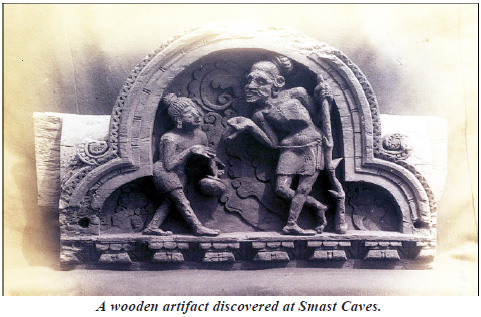
The paintings in the manuscripts at Gilgit have
faces in line with Gandhara style,the rest being
in accordance with the Indian style. The
figures in the manuscript are conspicuously
muscular ,with sturdy built up bodylines. All
these contributing factors seem to converge in
the painting style of Kashmir .This could be
identified as a special feature of Ancient
Kashmiri painting style. The experts also opine
that even the sculptures of Lalitaditya’s times
have a similar impact. King Avantivarman
(855 A.D. to 883 A.D.) was a great connoisseur
and patron of arts. During his reign, various
concepts of Gandhara Greek, Roman, Central Asian
and Chinese styles converged into a unique
combination reflected in Kashmir style of
painting. This peculiar style was also followed
in producing Kashmiri Bronzes. Not only that,
this style was also successfully employed for
wall paintings in Tibet in the 10th century.
Only natural colours were used for paintings in
Kashmiri style. The green pigmentation was made
from Turquoise found in Ladakh and the
blue one was made from Lepis Lazuli from
Gandhara. The attention of experts is always
focused on the unique features of the art of
Kashmir e.g. the technique, the colour scheme,
the blend of various art styles etc..
This art of Kashmiri painting lost its patronage
from the 11th century A.D onwards. The changed
socio-economic and political situation in
Kashmir added further to its decline. This led
to change in the Kashmir style of painting.
Since the times of Mughals , there was a more
forceful impact of Iranian art style on Kashmiri
painting. This can be discerned in the
paintings and pictures in manuscripts.
KR:What is the importance of Gilgit
manuscripts ?
SG: In the year 1938 A.D., Pt. Madhusudan
Kaul,then Head of State Archaeology Deptt.
discovered these manuscripts at Gilgit in a
small excavatory project. These manuscripts are
preserved at Srinagar in the Pratap Singh
Museum. One manuscript is written on palm leaves
while the otheris on birch bark. The first
manuscript is of the size 6cm. x 30 cm. It is
written in a script called Northern Cursive
Script. This script has descended from the
Late Gupta Script. The second manuscript
is of the size of 7.5cm x 30cm. Both there
manuscripts have wooden covers. There are icons
drawn on them. The first cover has a picture of
Lord Avalokiteshwar sporting ornaments. Two
disciples are sitting at the feet of the lord.
The disciples have put on the local attires of
the elicit. On the inside cover of the second
manuscript the picture of Lord Buddha sitting
on a Lotus in a meditative posture is depicted.
In the opinion of experts both these paintings
of Lord Avalokiteshwar and Lord Buddha belong to
a period between 7th & 8th century A.D. Further
these pictures are akin to and have similarity
with the traditional art of painting from
Foundkistan in Gandhara.
According to experts the pictures of Lord
Avalokiteshwar and Lord Buddha on the covers of
2nd manuscript belong to the 9th century. These
are in typical Kashmir style of painting. These
show convergence of Gandhara, Indian & Central
Asian Styles.
Gilgit manuscripts are masterpieces in the
history of Ancient India so far as the art
history is concerned. These manuscripts are
important for studying the evolution of the
Kashmir School of painting and the onward
journey of the same up to Tibet.
KR:Which religious sect in Kashmir was in
existence during the rule of the Kushans?
SG:During the 4th century
B.C. a religious cult called ‘Nagpuja Cult’ i.e.
serpent worshiping existed in Kashmir. During
the reign of Emperor Asoka, a Buddhist monk
named Majjahantika was sent to Kashmir
for propagation of the faith. When Majjhantika
arrived in Kashmir, he performed certain
miracles by the grace of heavenly bliss .
Araval, the Naga King of Kashmir, was highly
impressed and he surrendered before Majjahantika
along with his followers and converted to
Buddhism, shedding his earlier strong
opposition.
Hieun-Tsang, the famous Chinese traveller,
visited Kashmir in the 7th century
.According to him, as per the ‘native record’,
Kashmir was known as Dragon Lake. During
Hieun-Tsang’s stay in Kashmir, he says there
were about 500 Buddhist monks in Kashmir.
According to ‘Neelmatpurana’ Land was created
out from water and thus Kashmir came into being.
Kashmir was under the control of people called ‘Naga’.
Kashyap, the son of Nila was the
commander of this Land. The word Kashmir is
derived from ‘Kashyapmir’ (Land of Kashyap’)
Once this King Nila was pleased by the
blessings of a Brahmin called Chandradeva
Nila acceded to the request of Chandradeva and
permitted human beings to live in Kashmir during
winters. The Naga King also disclosed to him the
rites, which were to be followed, by the future
human inhabitants if they were to live
permanently in the valley. These rites included
devotional worship of certain deities and
festivals of ‘Nag Puja’. During the first
snowfall in the valley, the Naga king Nila was
worshipped. In the month of Bhadrapada during
the Varun Panchami festival, the serpent King
Nila was worshipped. Similarly, during the month
of Chaitra in the festival called Irmanjiri
Nila and serpents were worshipped. In accordance
with ‘Neelmatpurana’ the ‘Nagas’ had their
settlements near lakes and springs. Therefore,
many places of worship are found in the vicinity
of these places. Names such as Vernag, Anantnag,
etc. have been in vogue due to this ‘Naga
belief’. There is a reference in ‘Nilmatpurana’
that 527 principal Nagas were worshipped in
Kashmir. Pt. Kalhan has written that during the
month of Jyeshtha a festival for the great
serpent king Takshaka was celebrated and
many dances were performed during the festival.
This Nagpuja being practiced in Kashmir since
the times prior to the Christian era, seems to
have continued right up to the Medieval period.
In the 16th century,
Abul Fazal has written that in Kashmir, Lord
Vishnu was worshipped at 64 places, Lord Shiva
at 75 places, Lord Brahma at 3 places and
Goddess Durga at 22 places and Nagas were
worshiped at 700 places. These idols are carved
out and the residents worship them all. After
the death of Emperor Asoka, in the 1st century
A. D. King Menander of Indo- Greek descent came
to rule Kashmir. The Vihar built
by him in Kashmir is called
Milind Vihar. During the rule of King
‘Kanishka’ when Kashmir was a prominent hub of
Buddhist religious activities, many Buddhist
scholars were staying in Kashmir. During the
Kushan regime three cities - Kanishkapur (Kanispur),
Juskar( Inskar), Huvishkapur (Huskkur) - were
established in Kashmir. In the 1st century
A.D. in the reign of king Kanishka, many
chaityas & stupas were erected. The sermons and
dictates of Buddhist religion, carved out on a
copper plate were kept by Kanishka in a stupa
erected in Kashmir. ( To
be continued )
Source: Kashmir
Sentinel
| 






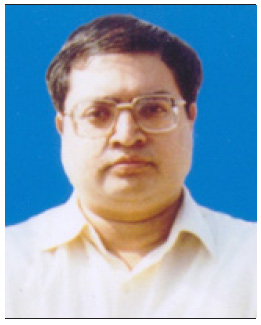
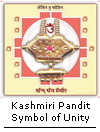
 SANJAY GODBOLE
SANJAY GODBOLE 







No one has commented yet. Be the first!